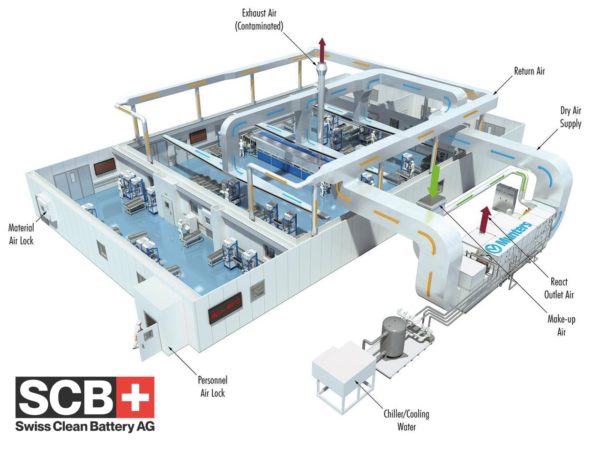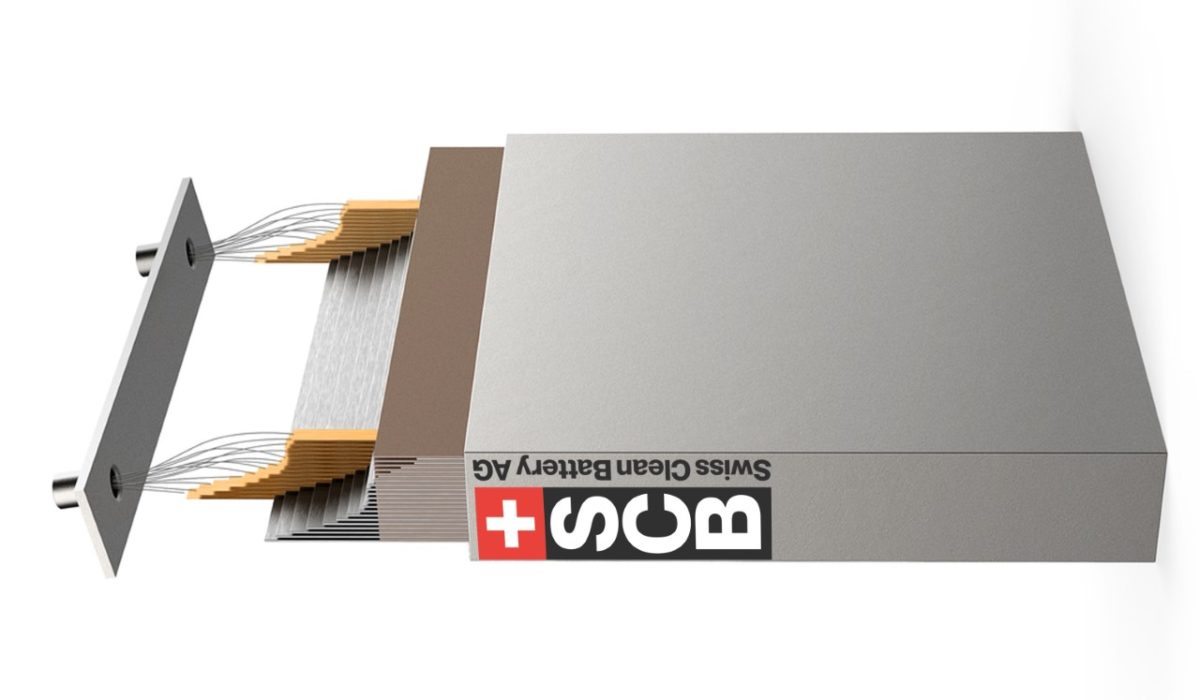Swiss startup Swiss Clean Battery (SCB) AG said this week that it will build a gigafactory to produce pure solid-state batteries at its headquarters in Teufen, Switzerland.
“With production scaling from 1.2 GWh to 7.6 GWH, SCB AG will serve both the Swiss domestic and international markets with sustainable battery storage from 2024,” the company said. “In the first production phase of 1.2 GWH, SCB AG is planning sales of CHF 318 million ($340 million). For this, CHF 246 million investment volume in the machinery is planned. In this first stage, SCB AG employs 181 people. A production area of 20,000 m2 will be built in order to manufacture 7.2 million battery cells per year.”
COO Thomas Lützenrath said the batteries will have several competitive advantages compared to conventional lithium-ion storage.
“Conventional lithium-ion batteries age because a covering layer is formed on their anodes through charging and discharging. This grows over time and with each use, even faster the more intensively the battery is used. This growth of the top layer consumes capacity and increases the internal resistance, and the performance of the battery decreases,” he told pv magazine.
By contrast, a very thin top layer in the pure solid-state batteries is formed during the first charge, said Lützenrath.
“After that, it doesn't grow anymore,” he explained. “By using our protected electrolyte made of a solid ion conductor, the internal resistance and capacity will remain virtually constant over the service life. No matter how much the battery is used.”
The battery technology does not require any critical raw materials such as cobalt or gold.
“As a result of this and the extreme service life, the environmental balance can be improved by more than half compared to conventional lithium-ion batteries,” Lützenrath explained. “The predecessor technology of the solid-state battery – still on a liquid basis – has already completed more than 50,000 charging cycles in practical use in the USA in a battery storage system for buffering the power grid. This liquid predecessor technology has already been produced on an industrial scale.”
The core of the storage technology is the solid ion conductor, which replaces conventional liquid electrolytes.
“A central, technical problem is to bring the fixed ion conductor in the battery cells into a stable connection with the electrodes. After more than 30 years of basic research, it has now been possible to solve this problem,” said Lützenrath.
He said many research projects are based on a modular design, which means that individual parts are combined outside the cell and inserted into the housing, with technical problems occurring during the transition of ions at the material boundaries, between the anode, the solid ion conductor and cathode.
“Our solid-state battery is different, as the fixed ion conductor is formed in the battery cell itself, similar to a multi-component adhesive, like two components glue,” said Lützenrath, without providing more technical details.
SCB said that its market value currently stands at CHF 13 billion and that it will launch an initial public offering on the Zurich stock exchange in October.
“In the final phase, SCB AG is to produce 7.6 GWH, with an investment sum of CHF 775 million and a turnover of over CHF 2 billion. Approximately 100,000 m2 of production area will be built for this purpose. At this stage of expansion, SCB AG will produce nearly 48 million battery cells per year with 1,061 employees. The company will then be worth CHF 8.6 billion,” said the company.
Solid-state batteries could be the most promising of the many different routes pursued by researchers to improve on today’s battery energy storage technologies. And many in the industry are optimistic that the approach will eventually bring about a “step change” in battery technology, greatly improving the capacity, lifetime and safety of lithium-ion batteries.
Swapping out the current generation of liquid/gel electrolytes with a solid material could eliminate any fire risk from the battery, as well as improving energy-to-weight ratios and removing the additional “energy redundant” packaging materials required to hold a liquid, among several other advantages.
The key development though is that the solid electrolyte would allow for the use of a lithium-metal anode, with far higher energy density than the graphite that’s commonly used today. Though there is research into integrating lithium-metal with liquid or semisolid electrolytes, all-solid-state is viewed by many as the best approach.

This content is protected by copyright and may not be reused. If you want to cooperate with us and would like to reuse some of our content, please contact: editors@pv-magazine.com.




How many kWh/kg and how many kWh/liter?
SCB is a great innovation. A soon as it turned out to be gold solution for energy storage, one should start spreading the technology in Europe first. It is the place which still has huge potential for this kind of products. For example new plants in Poland, Slovakia would offer quality and lower prices as e.g. Germany.
Switzerland has good examples with distributed production. Take Franke integrated sinks present all over the world..